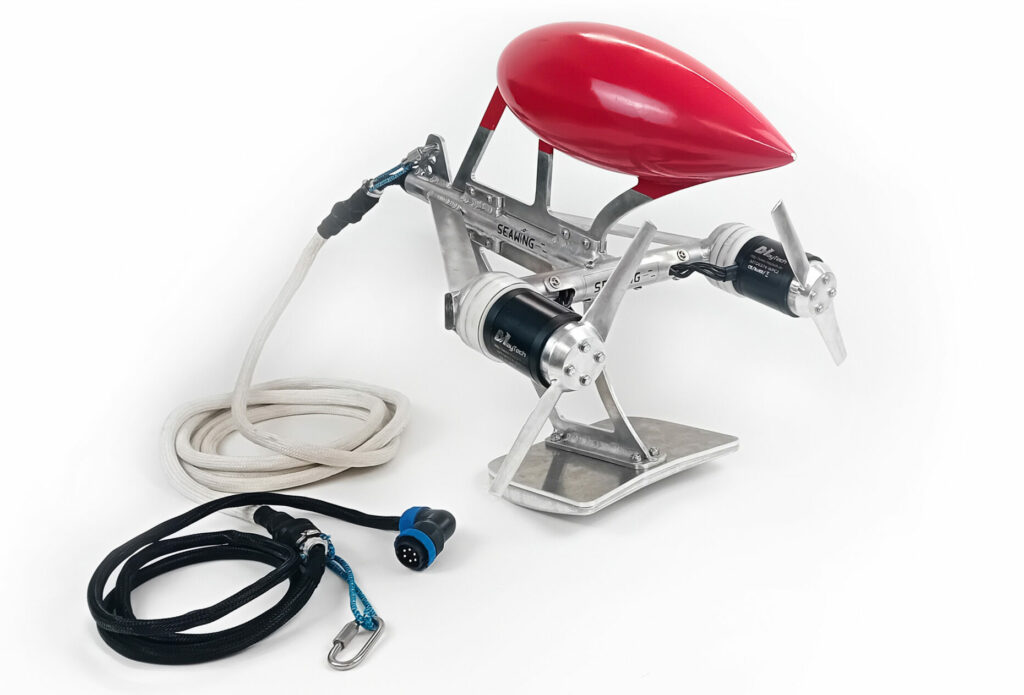
Seawing is a towed hydro-generator. It allows you to recharge your boat’s batteries while you sail. It is connected to your boat by a flexible cable ensuring both the mechanical holding function and the electricity transfer function. It is made up of an marine aluminum frame to which two counter-rotating propellers, a float and a fin are attached. Sacrificial anodes are positioned on the propellers and on the fin to prevent corrosion problems. It weighs approximately 6 kg and its propellers have a diameter of 240 mm.
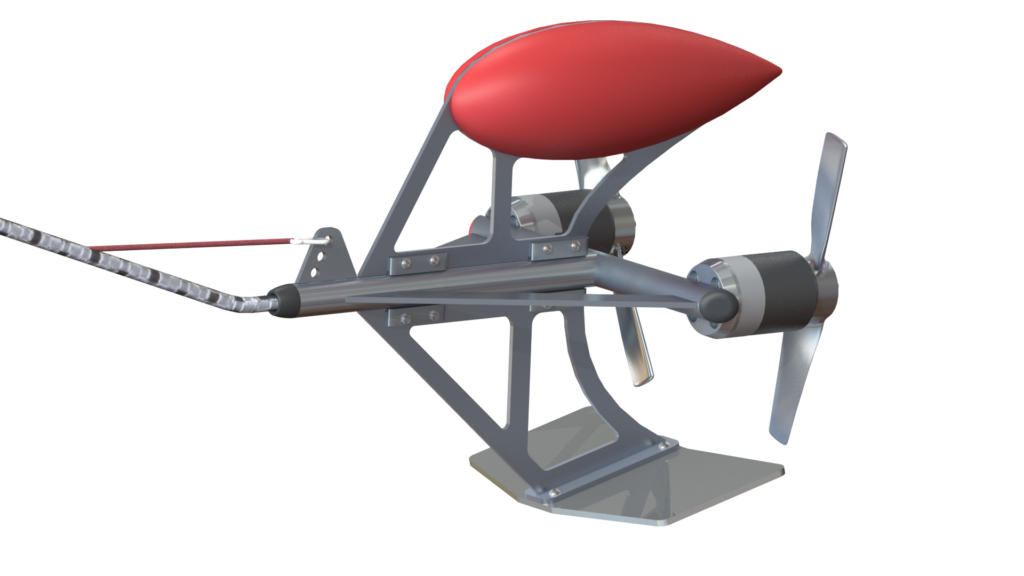
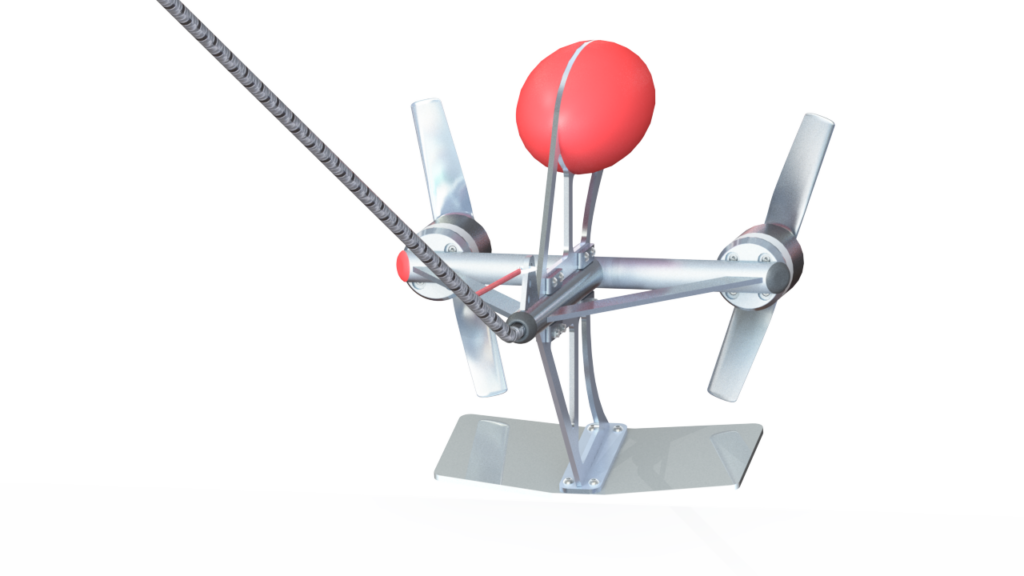

As soon as the boat speed exceeds 3 knots, the hydro-generator propellers start and charge the battery. The float coupled with the massive fin allows the system to self position itself in the water. The 12° inclined fin maintained the hydrogenerator at an optimal depth over the entire operating speed range of the device.
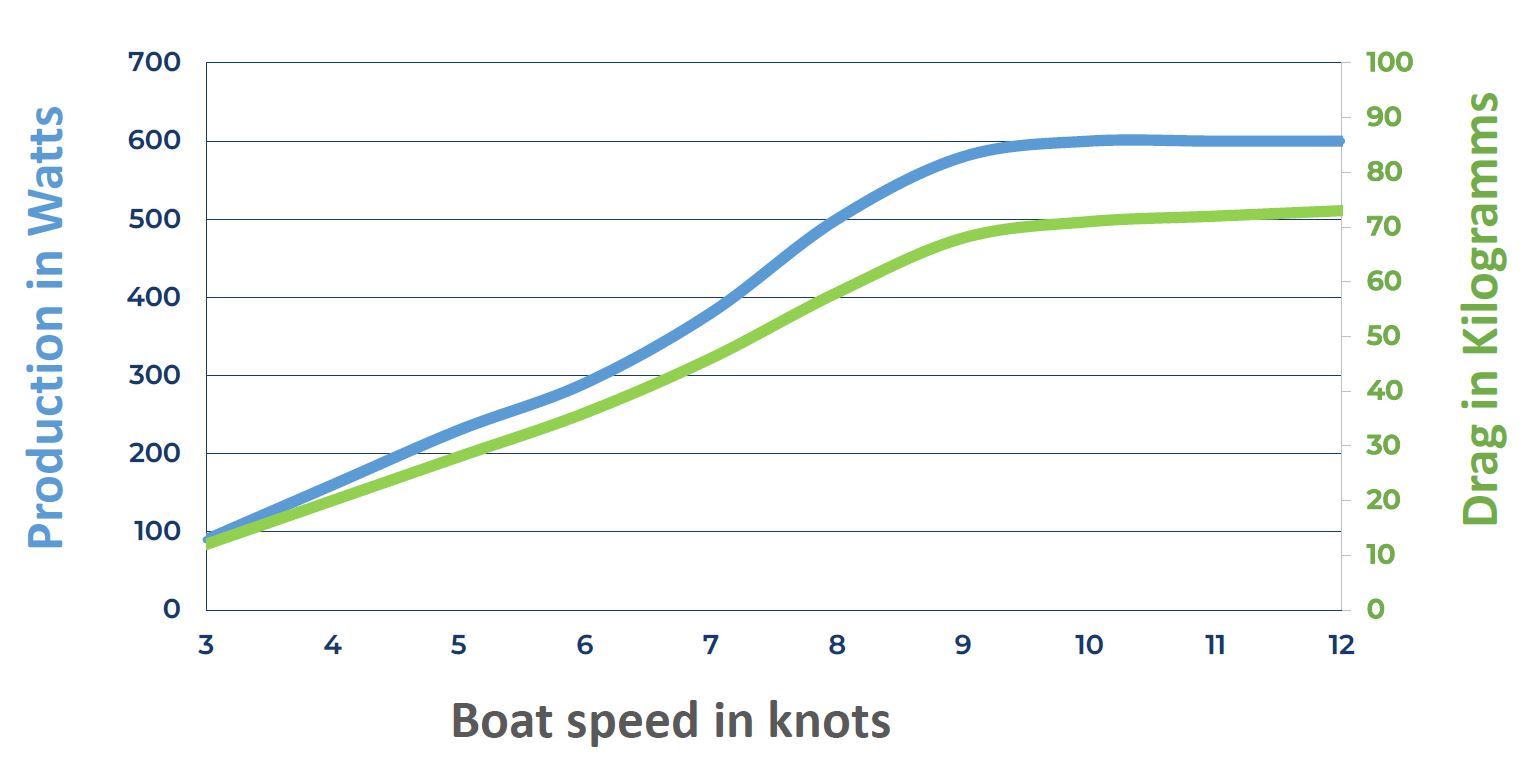
The output of the system depends on several factors. Generally speaking, the faster the boat, the more production increases, until a production ceiling is reached. The maximum allowable production is 600 Watts which is reached at 9 knots. The system can operate at 12, 24 or 48 Volts. The hydro-generator is equipped as standard with 240mm diameter propellers. Please contact us if you would like propellers of a different diameter..
The connection cable is made up of 6 extra flexible silicone cables with a section of 2 mm². These cables are covered with a dyneema braid ensuring the recovery of the drag forces of the hydro-generator. Thus, the electrical cables are not subject to any mechanical stress. A stainless steel carabiner allows you to attach the system to an existing attachment point on your boat. We recommend positioning this attachment point at a height of 60 centimeters above the waterline to ensure optimal operation. However, we have validated satisfactory operation with an attachment point located 130 centimeters above the waterline.
The length of the cable between the carabiner and the hydrogenerator is 320 centimeters. The length of the electrical cable between the carabiner and the electrical connector can be adapted to your needs. As standard, this length is 1 meter.
We provide a bulkhead connector to attach to the rear of your boat. However, if you do not wish to carry out drilling, you have the option of routing the cable on the deck of the boat and up to your electrical installation.
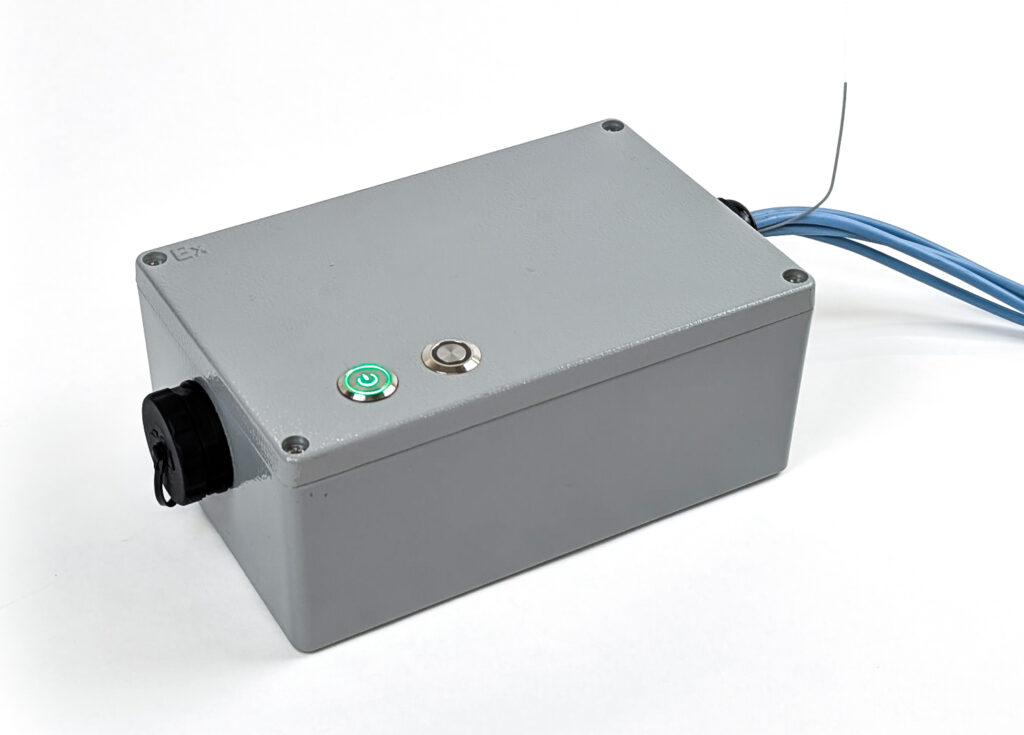
The electrical installation is reduced to a minimum. An aluminum electrical box (187x120x78mm) must be installed as close as possible to your battery park, ideally at a distance of 1 meter. You have the choice of using the bulkhead connector supplied with our hydro-generator (configuration 1). If you do not wish to do any hull drilling, the electrical box will be placed on the deck of the boat (configuration 2) and connected to the hydro-generator using the same bulkhead connector as configuration 1, but mounted directly on the electrical box. In the case of assembly in configuration 1, you will need to install 6 cables with a section of 2.5mm² (not supplied) between the base (screw terminal block) and the electrical box. Connection to the electrical box is made with dominoes. Regardless of the installation configuration (1 or 2), the connection of the box to your battery must be done with 2 doubled 6mm² cables (2 cables for the +, 2 cables for the -). The cables are connected in the housing to lever terminal blocks. On the front of the electrical box, you will find an ignition push button as well as a switch to activate the braking of the propellers.

A phone application allows you to monitor the operation of your hydro-generator. It connects via Bluetooth by pairing like any Bluetooth device. You can observe parameters of interest in real time such as rotation speed in RPM, production in Watts or battery voltage. The application also allows you to configure your hydro-generator to define the characteristics of your battery ( chemistry, cells number and capacity in Ampère-hours). Finally, you can update the hydrogenerator’s onboard software directly with the application. If you don’t want to use your phone every day, the hydrogenerator is designed to work autonomously. An ignition button on the front of the electrical box allows you to turn it on and it will do the rest. And if you forget to turn it off, don’t panic, the system has an automatic shutdown if it detects no activity. The system self-consumption when off is 0,2 milliamperes with a 24 Volts battery and 0,1 milliamperes with a 12 Volts battery.
Are performances dependent of my battery voltage?
Regardless of the battery voltage you use, the performance of your hydrogenerator will be the same. An interface board provides voltage conversion between the motor controllers and your battery to maximize output.
Will my boat lose speed while the system is operating? How much ?
Yes, your boat will be slowed down by Seawing. This is normal, we recover the wind energy in the sails to turn the Seawing propellers. It is difficult to give precise figures because braking depends on the size of the boat and the sail as well as the wind conditions. Generally speaking, Seawing slows you down by 0.1 to 0.3 knots.
Seawing has two propellers, on other systems there is only one. For what ?
Seawing is a towed hydro generator. Like your boat, it must ensure its stability in the water. A propeller creates a restoring torque that is difficult to recover given the size of Seawing. To achieve this, we mounted 2 counter-rotating propellers whose return torques cancel each other out.
Does your system slow down the boat more than 1 propeller systems?
It depends on the surface area intercepted by our propellers. For an identical intercepted surface, the hydrodynamic braking between two hydrogenerators will be identical. On Seawing, the default propeller size is 240mm.
How do we choose the size of the propellers?
This choice depends on the speed of your boat as well as your energy needs. If your boat goes fast (beyond 9 knots) or you have small energy needs, we will prefer 200mm propellers. Otherwise, we will choose 240mm propellers which is the default size.
How to attach Seawing to the boat ?
Our hydro-generator is towed. It must be attached using its carabiner to an attachment point on the transom of the boat. This attachment point must be at a maximum height of 130 cm above the waterline. The recommended height above the waterline is 60 cm. If possible, it is best to center the attachment point to avoid having to compensate for lateral drag with the bar. However, in the case of an eccentric fixing, the operation of the hydro-generator is not impacted. The fixing point must be able to withstand a force of 150kg. If you do not have a suitable mounting point, you can install our optional mounting plate.
What batteries are supported ?
Our converter supports Lithium-Ion, Lithium-Iron-Phosphate and Lead-Acid battery chemistries, regardless of battery bank capacity. Battery voltages should be between 12V and 48V. In order to configure the hydrogenerator for your battery, you will be asked to provide the battery chemistry, cell count and capacity. For lead acid, gel and AGM batteries, the hydrogenerator charge limit is C/10. So for a 12V and 100Ah battery, the power limit will be 14.4*100/10 = 144 Watts.
What happens when the batteries are charged ?
Your hydrogenerator can be configured using your phone via a Bluetooth connection. You must indicate the type of battery you are using: its chemical composition, its number of cells and its capacity. These settings are saved in the Seawing controller. Depending on these parameters, the hydrogenerator will attempt to reach the full charging voltage corresponding to your battery. The closer the voltage of your battery pack gets to the charge limit, the more the hydrogenerator will reduce its production power. At the end of the charge, the power produced by the hydrogenerator is zero. You can leave the hydrogenerator in place or remove it from the water by first pressing the brake button located on the electrical box.
How to maintain the hydro-generator ?
We recommend removing the hydro-generator from the water when it is not in operation. Before storing the hydro-generator, check that the propellers rotate freely and rinse the system with fresh water. Check the condition of the electrical connections from time to time. Contact us if necessary for more detailed maintenance.
